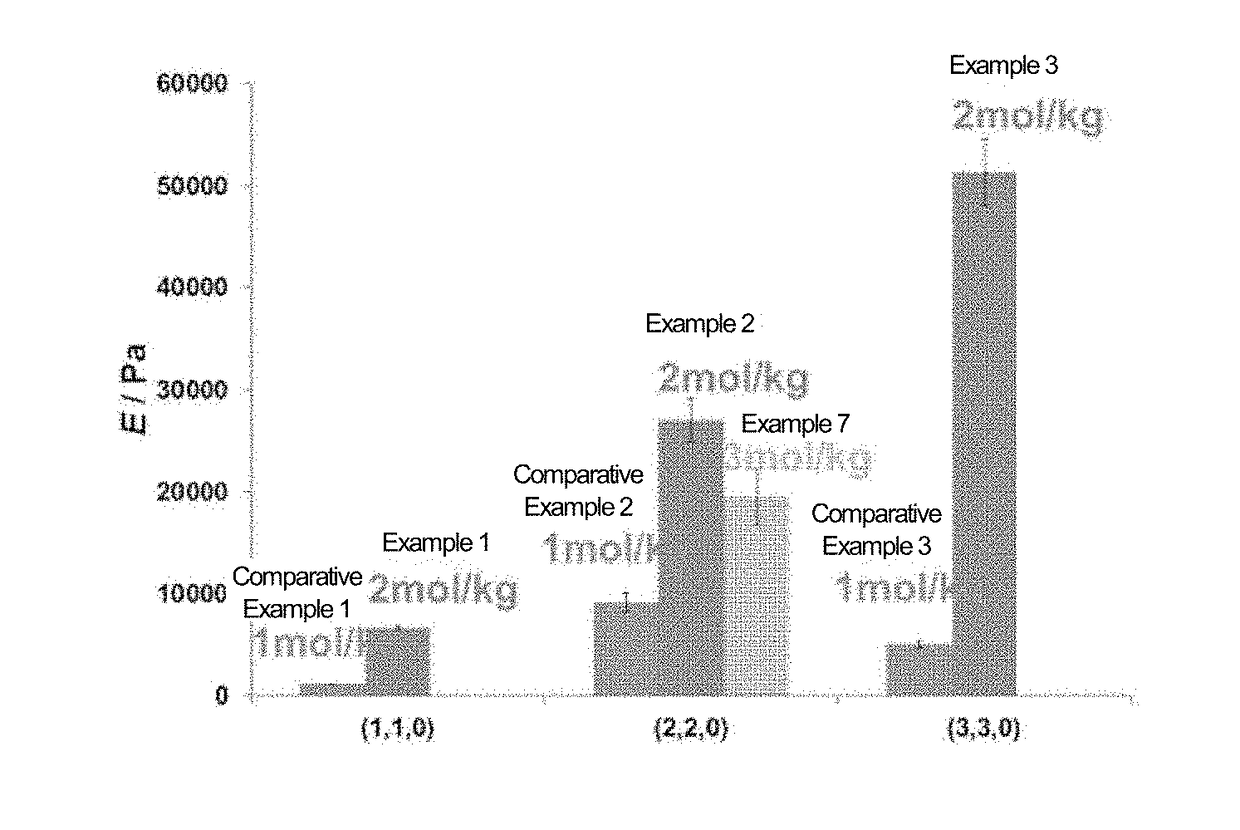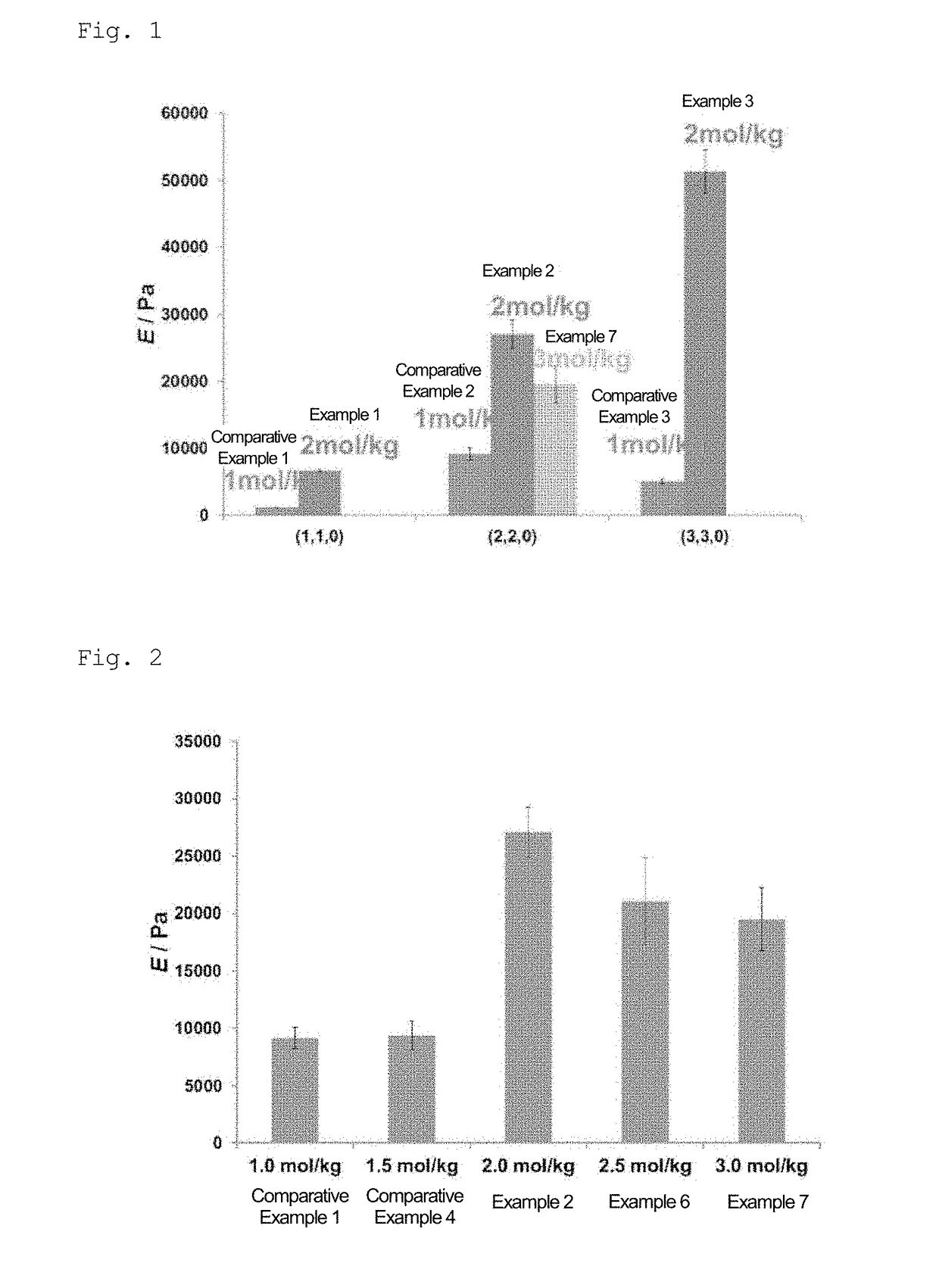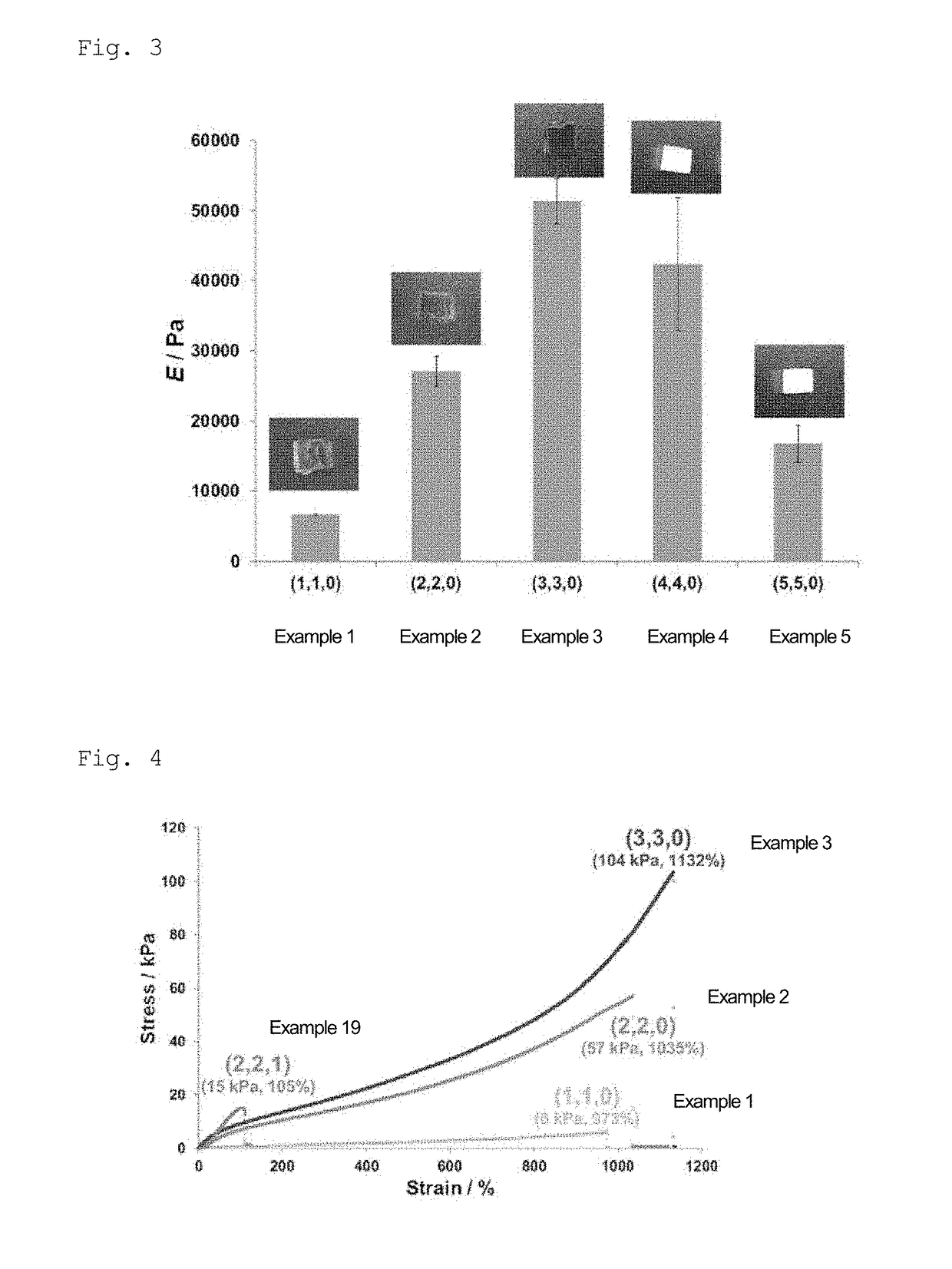Self-repairing material and manufacturing method therefor
a self-repairing material and manufacturing method technology, applied in the field of self-repairing materials, can solve the problems of insufficient bonding force, difficult self-repair, inability to bond back to the original state, etc., and achieve the effect of high dynamic strength
- Summary
- Abstract
- Description
- Claims
- Application Information
AI Technical Summary
Benefits of technology
Problems solved by technology
Method used
Image
Examples
example 1
[0174]In a sample bottle (3 mL), water was added to 6-acrylamide-β-cyclodextrin (βCD-AAm) as a monomer (A) and 1-acrylamide adamantane (Ad-AAm) as a monomer (B), and mixed. The bottle was sealed, and the mixture was heated and stirred at 90° C. for 3 hours. The obtained solution was allowed to cool to room temperature, and acrylamide (AAm) (produced by Wako Pure Chemical Industries, Ltd.) as a monomer (C) was added thereto and dissolved. The concentrations of PCD-AAm, Ad-AAm, and AAm in the obtained solution, and the total concentration of these monomers, were set to 20 mmol / kg, 20 mmol / kg, 1.96 mol / kg, and 2 mol / kg, respectively. Thereafter, 20 mmol / kg of ammonium persulfate (APS) and 20 mmol / kg of [2-(dimethylamino)ethyl]dimethylamine (TEMED) were added in this order, and the mixture was allowed to stand at room temperature for 1 hour to allow polymerization to occur, followed by washing, thereby obtaining a gel (HG1) in which the molar ratio of βCD-AAm-derived units and the molar...
example 2
[0175]A gel (HG2) was obtained in the same manner as in Example 1, except that the molar ratio of ρCD-AAm-derived units and the molar ratio of Ad-AAm-derived units were both 2 mol % based on the total amount of the monomers.
example 3
[0176]A gel (HG3) was obtained in the same manner as in Example 1, except that the molar ratio of βCD-AAm-derived units and the molar ratio of Ad-AAm-derived units were both 3 mol % based on the total amount of the monomers.
PUM
| Property | Measurement | Unit |
|---|---|---|
| Osmolality | aaaaa | aaaaa |
| Osmolality | aaaaa | aaaaa |
| Ratio | aaaaa | aaaaa |
Abstract
Description
Claims
Application Information
 Login to View More
Login to View More - R&D
- Intellectual Property
- Life Sciences
- Materials
- Tech Scout
- Unparalleled Data Quality
- Higher Quality Content
- 60% Fewer Hallucinations
Browse by: Latest US Patents, China's latest patents, Technical Efficacy Thesaurus, Application Domain, Technology Topic, Popular Technical Reports.
© 2025 PatSnap. All rights reserved.Legal|Privacy policy|Modern Slavery Act Transparency Statement|Sitemap|About US| Contact US: help@patsnap.com



